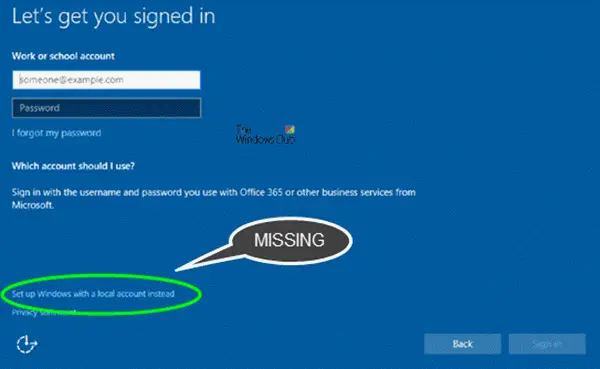Sign in with local account instead option missing
How to go about effectively resolving this issue depends on two scenarios. First, you’ll need to open Advanced User Accounts Control Panel to check if the Local user account exists or not. Here’s how:
As you can see above, I have three user accounts listed; the first is the built-in Administrator account, the second is the Microsoft Account and the third is the Local Account. Scenario 1 So with respect to the issue, we have at hand if the Local User Account is listed but the “Sign in with local account instead” option is missing, then it’s likely a case of corrupt Windows system files – in which case, you’ll need to attempt an SFC/DISM scan. Do the following: Copy and paste the command below into Notepad. Save the file with a name and append the .bat file extension – eg; SFC_DISM_scan.bat Repeatedly run the batch file with admin privilege (right-click the saved file and select Run as Administrator from the context menu) until it reports no errors – at which point you can now restart your PC and see if the option has been restored. If the “Sign in with local account instead” option is still not available, then you can perform a Windows In-place repair upgrade. This procedure will retain all your installed apps, personalized settings, and personal files/documents – but will replace any corrupt or damaged system files with fresh copies. Scenario 2 In the case of no Local User Account is listed in the User Accounts applet, that means the account hasn’t been created. So, you’ll need to create a Local User Account. Alternatively, you can create a new Local User Account in Windows 10 via the Computer Management snap-in console. Here’s how:
Right-click Start and select Computer Management.In the window, click the chevron on Local Users and Groups to collapse the section. Click Users.Now, right-click on the middle column and select New User.
Follow the onscreen prompts to provide the new user details.When done, restart your PC.
The “Sign in with local account instead” option should now be available and you can be able to sign-in using the newly created Local User Account. That’s it, folks. Hope this helps!

